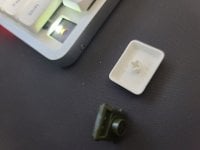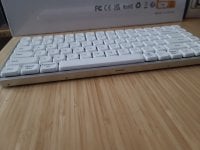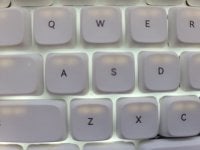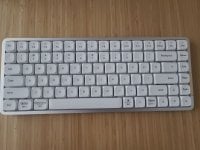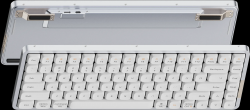 Lofree Flow Keyboard (Hardware)
Lofree Flow Keyboard (Hardware)
Official GBAtemp Review
Product Information:
- Official Store: https://lofree-flow-the-smoothest.kckb.st/48568f01
Lofree is attempting to take the low-profile mechanical keyboard world by storm, with its Lofree Flow keyboard. Promising a lot of features in such a tiny form factor, to the point of including a gasket mount, this is quite possibly the most interesting low-profile keyboard on the market.
Personally, low-profile keyboards are something that always interests me as a concept, and then I try them out, only to realize that I hate the very rigid typing experience. The keys need to have a very low travel distance, hence the low-profile moniker, but they still try to emulate most aspects of a mechanical keyboard, just scaled down. Most of the fun, at least to me, is the tactility and bounce of a mechanical keyboard, and low-profiles struggle to succeed in both regards.
Lofree attempts to rectify this by cramming a gasket-mounted plate into the form factor of an ultra-thin keyboard. Between that, and cushioning foam inside the case, they've managed to get the best of both worlds. You have the quiet typing that you'd normally expect from a chicklet keyboard, with all the bounce and flex of a traditional mech keyboard, in the form factor of a hyper-minimalist thin-framed keyboard.
There do seem to be a handful of concessions in order to make this possible, however. First, and most notably, are the keycaps. They're PBT, which is wonderful to have, especially with how hard it might be to source replacement low-profile caps. However, they're also so thin that I think it's a detriment; the keycaps' engraving on the underside is able to be seen whenever the Free's backlight is on, giving a weird yellow highlight to the top of every single key. This one is just an aesthetics problem, and would only really impact white keycaps. The real issue is the thinness leading to warped keycaps. In my unit, the spacebar was awkwardly curved, which meant that there was uneven travel depending on which side you pressed down on. If low-profile caps were easier to come by, I'd almost consider just replacing them, and the keyboard overall would still be a good value.
Lofree uses low-profile POM switches in the Flow, and they're smooth and a much-needed improvement over traditional low-profile switches. There's three options between tactile, linear, and clicky, per usual, with the linear "ghost" switches performing very well for both typing and gaming. They have a somewhat heavy actuation, which prevents mistakes, while still being quick to press for gaming.
The good news is that there's no key rattle, and the rest of the keyboard's construction is very solid, with an aluminum case, and the whole thing looks clean and very snazzy, like an Apple product. I've been told that the issues I ran into with my keyboard aren't indicative of the final product, since this is the first line of manufactured units. Only time will tell as to whether or not Lofree will ensure that the keycaps are more consistent in the full release, but given the rest of the quality of the Flow, I'm hopeful. Should they iron out the keycap problem, I could see this being a must-have keyboard--and honestly, even as it is now, it's still incredibly solid. That solid build does however take away from the keyboard's portability, making it a little hefty.
Anyone who's ever enjoyed a low-profile typing experience, but was left wanting more, or those that want that sharp minimalist aesthetic will be thrilled to know that the Lofree Flow is a fantastic keyboard that is absolutely worth its $109 early-bird price. Assuming they iron out the handful of minor issues when the keyboard officially launches, the Flow could be the king of low-profile keyboards.
Verdict
- Very cushioned typing experience despite its thinness
- Awesome Kailh switches
- Quality case and keycaps
- Quiet to type on
- The spacebar is a little curved and uneven
- Noticeable gaps of RGB near the stabilizers
- Lack of adjustable feet
